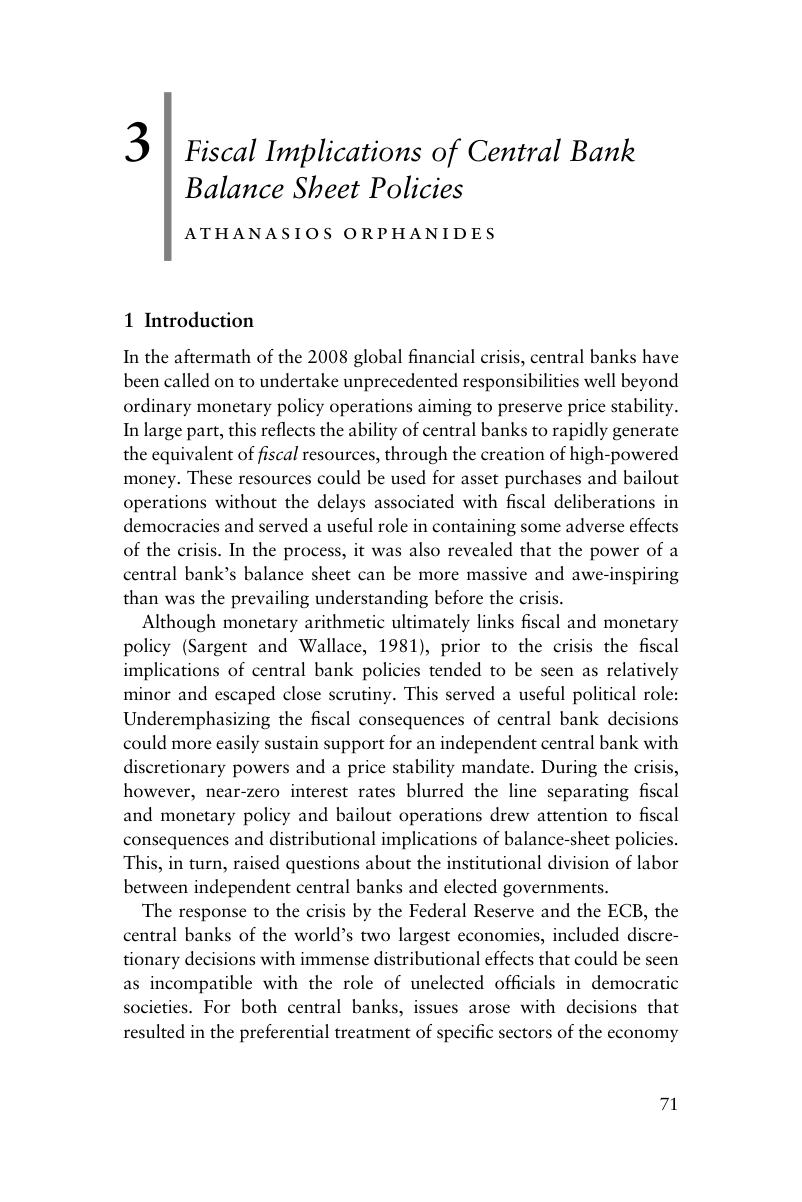Book contents
- Rethinking Fiscal Policy after the Crisis
- Rethinking Fiscal Policy after the Crisis
- Copyright page
- Contents
- Figures
- Tables
- Boxes
- Contributors
- Acknowledgements
- 1 Introduction and Overview
- Part I Frontiers of Fiscal Policy
- 2 Fiscal Analysis Is Darned Hard
- 3 Fiscal Implications of Central Bank Balance Sheet Policies
- Part II Better Institutions for Better Fiscal Policy
- Part III New Analytical Perspectives
- Part IV The Comeback of Discretionary Fiscal Policy
- Book part
- Index
- References
3 - Fiscal Implications of Central Bank Balance Sheet Policies
from Part I - Frontiers of Fiscal Policy
Published online by Cambridge University Press: 19 May 2017
- Rethinking Fiscal Policy after the Crisis
- Rethinking Fiscal Policy after the Crisis
- Copyright page
- Contents
- Figures
- Tables
- Boxes
- Contributors
- Acknowledgements
- 1 Introduction and Overview
- Part I Frontiers of Fiscal Policy
- 2 Fiscal Analysis Is Darned Hard
- 3 Fiscal Implications of Central Bank Balance Sheet Policies
- Part II Better Institutions for Better Fiscal Policy
- Part III New Analytical Perspectives
- Part IV The Comeback of Discretionary Fiscal Policy
- Book part
- Index
- References
Summary

- Type
- Chapter
- Information
- Rethinking Fiscal Policy after the Crisis , pp. 71 - 100Publisher: Cambridge University PressPrint publication year: 2017
References
- 2
- Cited by



